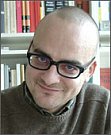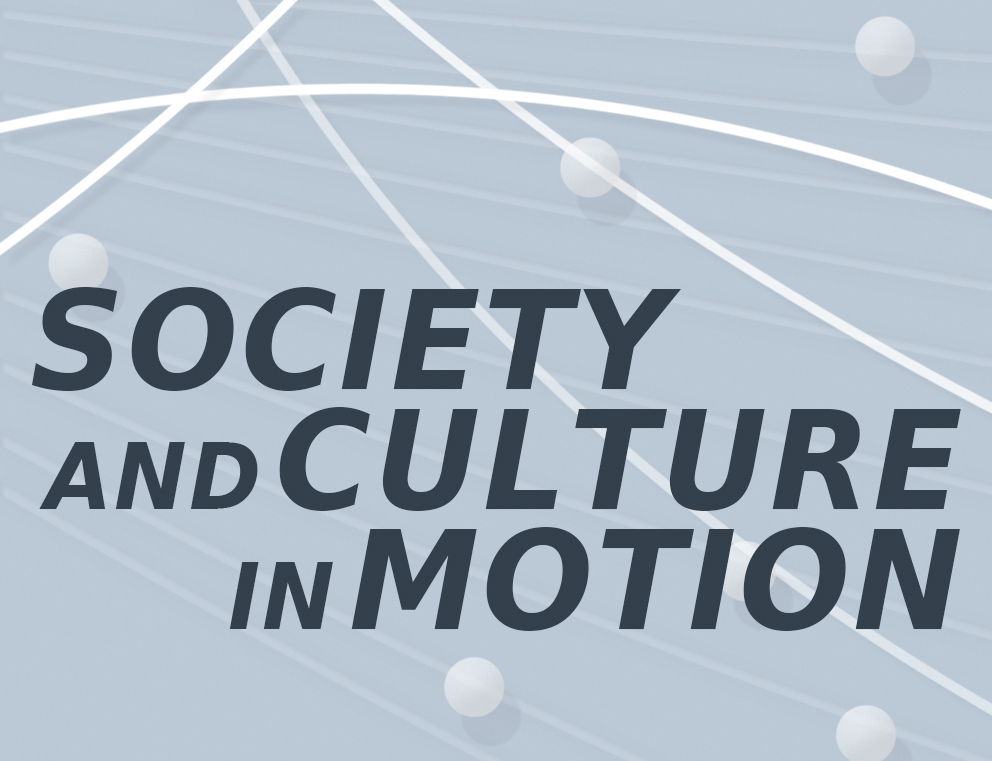Dr. Lutz Greisiger

Ph.D. Student (Scholarship holder 08/2005 - 01/2008, 06/2009 - 11/2009)
Dissertation defense: August, 10th 2011
Predicate: summa cum laude
Contact
Lutz Greisiger
Martin-Luther-Universität Halle-Wittenberg
Orientalisches Institut
Seminar für Christlichen Orient und Byzanz
Mühlweg 15
06114 Halle / Saale
phone: ++49 (0) 345 / 552 40 71
fax: ++49 (0) 345 / 552 71 23
lutzgreisiger@web.de
History and Identity. Parallels of Jewish and Syrian Christian Apocalypticism in the 7th Century
Supervisor: Prof. Dr. Jürgen Tubach
The 7th century was a period of world-shattering political changes. Within just a few decades the peoples of the Near East experienced an unprecedentedly successful Persian conquest of their and their neighboring lands, a triumphant roll-back by the Byzantine empire and eventually the utterly unexpected chain of victories of the Arab Muslim forces which brought about a new religious-political power in world history. It is little surprising that these events provoked a revival of the literary traditions of apocalypticism. Jews as well as Syrian Christians composed a remarkable number of new apocalyptic texts which were meant to confirm the claim that the respective religious community was the predestined victorious force in history. Thereby these texts invoked the steadfastness of the believers and strengthened their respective group-identities. The general theme was, that the contemporaries faced the tribulations of the Endtime which would usher in a period of world-wide peace and paradisiac state for the true believers. In both of the text-groups a set of novel or enhanced mythological motifs concerning the eschatological events occured, many of which bear a striking resemblance to each other. These parallels are most likely the outcome of interreligious conflict and dispute.
The study will examine the formation of such motifs in a comparative approach. It aims to show the dynamics of apocalyptic movements in reaction on political, social and religious processes. The focus on the examination will be on the impact of the interaction of religious groups-the Jewish and Christian communities in the Near East-on these dynamics.
Curriculum Vitae
| 1998-2005 |
studies of Christian Orient and Jewish Studies at Martin-Luther-University Halle-Wittenberg and Studies of Religions at Leipzig University. |
| 2002 |
DAAD-scholarship for a two months practicum at St. Ephrem Ecumenical Research Institute, institute for Syriac Studies associated to Mahatma-Gandhi-University at Kottayam, India. Assistance in the preparation of the Vth World Syriac Conference 8-14 September 2002. |
| 2003-2004 |
research on 18th century Jewish-Christian relationships at the Moravian Archives at Herrnhut. |
| 2004 |
papers read at the Leucorea-Kolloquium in Wittenberg, the 4th Deutsches Syrologen-Symposium in Trier and at the 29. Deutscher Orientalistentag in Halle. |
| 2005 |
magister thesis: "Religions- und traditionsgeschichtliche Studien zu den edessenischen Märtyrern". Magister degree. co-initiator of the international symposium "Edessa in hellenistisch-römischer Zeit. Religion, Kultur und Politik zwischen Ost und West", held at Halle, July 14-17 2005. DAAD-scholarship for the Summer University programme at Ben-Gurion-University of the Negev , Beer Sheva, Israel. papers read at the Edessa-Symposium in Halle, the international workshop |
| 2005-2006 |
collaboration in the edition of the missionaries’ travel itineraries of the Institutum Judaicum in Halle 1730/31 . |
| 2005-2007 | scholarship at the GSAA |
Editorships
Articles in Journals and Encyclopedias, Reviews
| 2004 |
Jüdische Kryptochristen im 18. Jahrhundert? Dokumente aus dem Archiv der Evangelischen Brüderunität in Herrnhut. In: Judaica 60, 2004, S. 204–223; 325–339. |
| 2005 |
Edessenische Märtyrerakten als Quellen zur Religionsgeschichte. In: TAMCKE, Martin; HEINZ, Andreas (ed.): Die Suryoye und ihre Umwelt. 4. deutsches Syrologen- Symposium in Trier 2004. Festgabe Wolfgang Hage zum 70. Geburtstag (Studien zur Orientalischen Kirchengeschichte, vol. 36). Münster, 219–245. [Review] Rymatzki, Christoph: Hallischer Pietismus und Judenmission. Johann Heinrich Callenbergs Institutum Judaicum und dessen Freundeskreis (1728–1736) (Hallesche Forschungen, vol. 11). Tübingen, 2004. In: Judaica 61, 2005, 281f. with DOKTÓR, Jan: „Wielka tajemnica“. List amsterdamskich judeochrzeœcijan do pastora Johanna Burgmanna z 1773 roku. In: Kwartalnik Historii Żydów (Jewish History Quarterly) 2005, Nr. 4 (216), 577–592. |
| 2006 |
Barsamya, Märtyrer in Edessa . In: Biographisch-bibliographisches Kirchenlexikon, Bd. 26, Ergänzungen XIII. Nordhausen, col. 119–121. Habbib, Märtyrer in Edessa . In: Biographisch-bibliographisches Kirchenlexikon, Bd. 26, Ergänzungen XIII. Nordhausen, col. 601–605. Šarbel, Babai, Märtyrer in Edessa . In: Biographisch-bibliographisches Kirchenlexikon, Bd. 26, Ergänzungen XIII. Nordhausen, col. 1311–1315. Šmona und Gurya, Märtyrer in Edessa . In: Biographisch-bibliographisches Kirchenlexikon, Bd. 26, Ergänzungen XIII. Nordhausen, col. 1438–1444. [Rez.] Heuberger, Rachel: Aron Freimann und die Wissenschaft des Judentums (Conditio Judaica. Studien und Quellen zur deutsch-jüdischen Literatur- und Kulturgeschichte, vol. 51). Tübingen, 2004. In: Judaica 62, 2006, 282f. Chiliasten und „Judentzer“. Judenmission und Eschatologie im protestantischen Deutschland des 17. und 18. Jahrhunderts. In: Kwartalnik Historii Żydów (Jewish History Quarterly) 2006, Nr. 4 (220), 535–575. |
| 2007 |
[Review] Reeves, John C.: Trajectories in Near Eastern Apocalyptic. A Postrabbinic Jewish Apocalypse Reader. Atlanta/Leiden, Boston, 2005 (Resources for Biblical Study, vol. 45), 2005. In: Judaica 63, 145f. Ein nubischer Erlöser-König: Kūš in syrischen Apokalypsen des 7. Jahrhunderts. In: VASHALOMIDZE, Sophia G.; GREISIGER, Lutz (ed.): Der Christliche Orient und seine Umwelt. Gesammelte Studien zu Ehren Jürgen Tubachs anläßlich seines 60. Geburtstags (Studies in Oriental Religions, vol. 56). Wiesbaden, 189–213. [Rez.] Meyer-Blanck, Michael; Hasselhoff, Görge K. (ed.): Krieg der Zeichen? Zur Interaktion von Religion, Politik und Kultur (Studien des Bonner Zentrums für Religion und Gesellschaft, vol. 1). Würzburg, 2006. In: Zeitschrift für Religionswissenschaft 15, 2007, 100f. |
| 2008 |
Šarbēl: Göttin, Priester, Märtyrer – einige Probleme der spätantiken Religionsgeschichte Nordmesopotamiens. In: DROST-ABGARJAN, Armenuhi; KOTJATKO-REEB, Jens; TUBACH, Jürgen (ed.): Vom Nil an die Saale. Festschrift für Arafa Mustafa zum 65. Geburtstag am 28. Februar 2005 (Hallesche Beiträge zur Orientwissenschaft, vol. 42). Halle (Saale), 75–96. Recent Publications on the German Pietists’ Mission to the Jews. In: European Journal of Jewish Studies 2, 2008, 127–156. |
Study Day Contributions
- The Torah in Primitive Christianity
- The Eschatological War Waged by the Last Roman Emperor - according to the Apocalypse of Pseudo-Methodios
- Piety and Forgery. The Problem of Pseudepigraphy in Late Antique Jewish and Christian Literature





